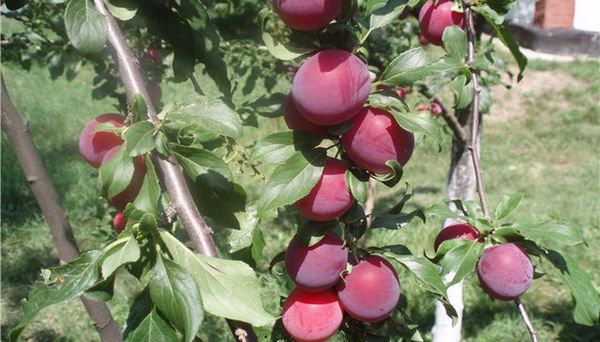Description of the universal early variety of cherry plum Cleopatra
Content
Description and characteristics
Modern Cleopatra is a wonderful cherry plum grown on plots by many gardeners in the country. The description of the variety should start with the main characteristics.
The culture begins to bear fruit for 4 years from the moment of planting. Average yield, constant fruiting. The tree is partially self-fertile, so to get a good harvest in the neighborhood it is advised to plant 1–2 other varieties of cherry plum. Productivity in the presence of cross-pollination doubles or even triples. The collection of fruits falls in September. Winter hardiness is high. Another cherry plum, called Cleopatra, has a persistent immunity to diseases.
Outwardly, the culture is a medium-sized tree - from 3 to 4 m in height. The crown is wide-conical and medium thickened. Shoots are straight and thin with brown bark. The leaves are elliptical, with large serrated edges and a dark green color. The fruits are large, aligned and round-oval in shape, the average weight of each does not exceed 37 g.
A side seam is visible on the surface of the berries. The rind is reddish purple and rather dark. The top of the fruit is flat, the narrow funnel is medium in size. The peduncle is small both in thickness and length. The pulp has a dense structure, it is cartilaginous and colored red. The small bone is easily separated from the core of the fruit. The taste of the fruit is sweet, there is an obligatory sourness. The berries contain 3.1% acid, 5.5% sugars and about 9.3% dry matter.
Growing features
Cherry plum with the beautiful name Cleopatra differs from cherry and plum trees in a longer growing season. Spring planting does not always end with successful cultivation - due to the long growth of shoots in the fall, the seedlings may not ripen by the time of digging. In winter, they often dry out in the pits and turn out to be defenseless against low temperatures.
The optimal dimensions of the planting pit are also known - 60 × 80 cm. Its depth should not exceed 50 cm. A peg is placed in it for the subsequent garter of the tree. A mixture of the top layer of earth obtained by digging a hole is introduced, with humus, phosphorus and potassium dressings. The last two components are added in amounts of 200 g and 60 g, respectively. Instead of potash fertilizers, sometimes 0.5 kg of wood ash is added.
Formative pruning is one of the important stages of cherry plum care. After the young shoots stop growing, they should be shortened by 20 cm. When the tree is 8-10 years old, it will need rejuvenating pruning. The procedure is no different from that recommended for any fruit plants.
Advantages and disadvantages
A universal type of stone fruit, it combines the high productivity and endurance of the classic cherry plum with large-fruited and excellent taste of plum fruits. It is also appreciated by gardeners for the opportunity to obtain fruits that have not only a pleasant taste and aroma, but also a presentable appearance. The culture tolerates frost well, therefore it is cultivated in areas in the middle lane and the Moscow region. The disadvantages include self-infertility and average resistance to disease.
Video "How to plant cherry plum"
From this video you will learn how to plant cherry plum correctly.



